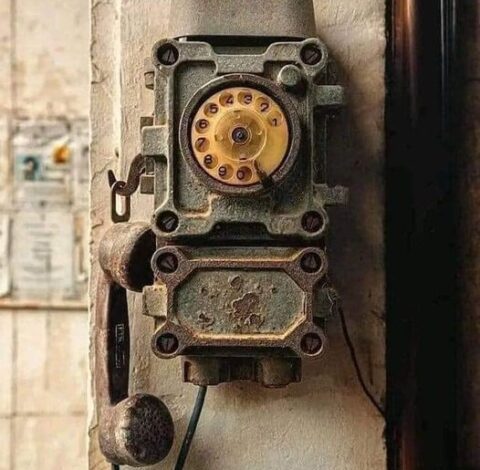Old telephone from the 1900s

Telephones from the 1900s underwent significant technological and design changes over the course of the century. In the early 1900s, telephones were primarily wall-mounted and had a hand-cranked magneto generator to generate electrical signals for calling. Here are a few notable types of telephones from the 1900s:
Candlestick Telephone (1890s–1920s):
One of the iconic designs from the early 1900s.
The user spoke into the mouthpiece attached to the receiver and listened through the earpiece.Rotary Dial Telephones (1920s–1960s):
Rotary-dial phones became popular in the mid-20th century.
Users dialed numbers by rotating a dial with numbered holes corresponding to each digit.
These phones often had a distinct, heavy design with a solid metal base.Desk Telephones (1920s–1950s):
These were stationary phones designed to sit on a desk or table.
They typically had a separate handset with a coiled cord.
The design varied but often featured a boxy or rounded shape.Payphones (late 1800s onwards, but prominent in the 20th century):
Public payphones were prevalent in the mid-1900s.
The design varied but often featured a boxy or rounded shape.Payphones (late 1800s onwards, but prominent in the 20th century):
Public payphones were prevalent in the mid-1900s.
These phones were often enclosed in a booth for privacy.Bakelite Phones (1930s-1950s):
Bakelite, an early plastic, was used in telephone design during this period.
Phones made from Bakelite were durable and came in various colors.
The design was often sleek and streamlined.Princess Phone (1950s–1960s):
The Princess telephone had a more compact and stylish design.
They came in various colors to match home decor.Wall-Mounted Telephones (early to mid-1900s):
Many early telephones were mounted on walls.
These phones often had a long, vertically oriented design with a separate earpiece and mouthpiece.
It’s important to note that telephone technology evolved rapidly throughout the 20th century, with the transition from rotary dials to touch-tone pads, the introduction of cordless phones, and ultimately the shift to digital and mobile technology in the later decades. Each era had its own distinctive telephone designs, reflecting the technology and style of the time.




